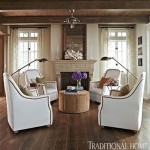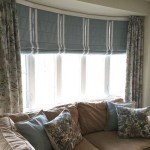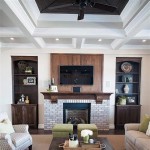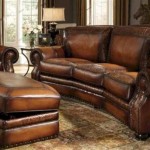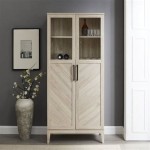Pictures Of Rugs In Living Room: A Visual Guide to Enhancing Your Space
The living room, often considered the heart of a home, serves as a central gathering space for family and friends, a place for relaxation, and a reflection of personal style. Among the various elements that contribute to a living room's overall aesthetic, rugs play a significant role. Careful selection and placement of rugs can dramatically transform the ambiance of a room, adding warmth, texture, and visual interest. This article explores the diverse ways rugs can be incorporated into living room designs, drawing on visual examples to illustrate key considerations.
The images of rugs in living room spaces reveal a wide range of design possibilities. From defining seating areas to complementing existing décor, rugs offer a versatile tool for interior decorating. The following sections will detail some crucial aspects to consider when choosing and placing rugs within a living room setting.
Size and Placement: Establishing Proportions and Defining Spaces
Determining the appropriate size and placement of a rug is paramount in achieving a balanced and harmonious living room. A too-small rug can appear isolated and insignificant, while an overly large rug can overwhelm the space. The ideal approach involves carefully measuring the area and considering the furniture arrangement.
One common strategy is to select a rug large enough to accommodate all the front legs of the major pieces of furniture, such as sofas and armchairs. This approach creates a cohesive and unified seating area, visually grounding the furniture and establishing a clear focal point. In larger living rooms, the rug might encompass all the furniture, creating a more expansive and luxurious feel. Conversely, in smaller living rooms, a rug placed solely under the coffee table can still add warmth and definition without dominating the limited space.
Another important consideration is the relationship between the rug and the room's architecture. Leaving a border of flooring visible around the perimeter of the rug helps to frame the space and prevent it from feeling cramped. The width of this border will depend on the size of the room and the overall aesthetic goal. A wider border can create a more airy and open feel, while a narrower border can contribute to a more intimate and cozy atmosphere.
The shape of the rug should also complement the shape of the room and the furniture arrangement. Rectangular rugs are generally the most versatile and work well in a variety of living room layouts. However, round rugs can add a softening touch to a space and are particularly effective when paired with round coffee tables or used to define a smaller seating area. Square rugs can be a good choice for square rooms, while irregularly shaped rugs can add a unique and artistic flair.
Pictures of rugs in living rooms effectively demonstrate these principles. Observe how different rug sizes and placements impact the overall proportions and flow of the room. Notice how strategically placed rugs can visually connect disparate elements, creating a sense of unity and cohesion.
Color and Pattern: Creating Visual Interest and Complements Existing Décor
Beyond size and placement, the color and pattern of a rug significantly influence the overall aesthetic of a living room. The rug can serve as a neutral foundation upon which to build the rest of the room's décor, or it can act as a bold statement piece that adds personality and visual interest.
When selecting a rug color, consider the existing color palette of the living room. If the room is already filled with vibrant colors and patterns, a neutral-toned rug can provide a calming and grounding effect. Conversely, if the room is predominantly neutral, a rug with bold colors or intricate patterns can inject energy and character. Consider the undertones of the existing furniture and walls when choosing a rug color to ensure a harmonious and balanced look.
The pattern of a rug can also play a significant role in shaping the room's atmosphere. Geometric patterns can add a contemporary and structured feel, while floral patterns can evoke a more traditional and romantic ambiance. Abstract patterns can create a sense of movement and dynamism, while solid-colored rugs offer a clean and minimalist look. The scale of the pattern should also be considered in relation to the size of the room. Larger patterns can be overwhelming in smaller spaces, while smaller patterns can get lost in larger spaces.
The visual impact of different color and pattern choices is clearly illustrated in pictures of rugs in living rooms. Study how various color combinations and pattern styles affect the mood and style of the room. Pay attention to how the rug complements or contrasts with the existing furniture, artwork, and accessories.
Consider the practical aspect of rug color and pattern choices as well. Lighter colored rugs tend to show dirt and stains more easily than darker colored rugs. Rugs with intricate patterns can often hide stains and wear better than solid-colored rugs. Therefore, it's important to choose a rug color and pattern that is both aesthetically pleasing and practical for your lifestyle.
Material and Texture: Adding Comfort and Enhancing the Tactile Experience
The material and texture of a rug contribute significantly to the overall comfort and tactile experience of a living room. Different materials offer varying levels of softness, durability, and visual appeal. The choice of material should be based on factors such as foot traffic, lifestyle, and personal preferences.
Wool rugs are known for their durability, softness, and natural stain resistance. They are a popular choice for high-traffic areas and offer a luxurious feel underfoot. Synthetic rugs, such as those made from nylon or polypropylene, are more affordable and easier to clean than wool rugs. They are a good option for households with children or pets. Cotton rugs are lightweight and breathable, making them a good choice for warmer climates. However, they are not as durable as wool or synthetic rugs and may require more frequent cleaning.
The texture of a rug can also add depth and interest to a living room. High-pile rugs, such as shag rugs, offer a plush and cozy feel. Low-pile rugs are more practical for high-traffic areas and are easier to clean. Flat-weave rugs, such as kilims and dhurries, have a distinctive texture and add a bohemian flair to a space.
Consider the interplay of textures within the living room. A plush rug can be paired with smooth leather furniture for a contrasting effect. A flat-weave rug can be paired with textured cushions and throws to add depth and interest. The key is to create a balanced and harmonious tactile experience that enhances the overall comfort and ambiance of the room.
Pictures of rugs in living rooms effectively showcase the diverse range of materials and textures available. Observe how different materials contribute to the overall look and feel of the room. Pay attention to how the texture of the rug complements or contrasts with the other elements in the space. By carefully considering the material and texture of your rug, you can create a living room that is both visually appealing and invitingly comfortable.
When selecting a rug material, it is also crucial to consider potential allergens. Wool rugs, for instance, can sometimes trigger allergies in sensitive individuals. Synthetic rugs are generally considered hypoallergenic. It's advisable to research the properties of different rug materials before making a purchase, especially if you or members of your household have known allergies or sensitivities.
Finally, think about the maintenance requirements of different rug materials. Wool rugs typically require professional cleaning, while synthetic rugs can often be cleaned at home. Cotton rugs can be machine-washed, but they may shrink or fade over time. Choosing a rug material that aligns with your cleaning capabilities and lifestyle will help ensure its longevity and beauty.
The strategic application of rugs, as visually demonstrated in numerous living room pictures, ultimately contributes to creating a space that is both aesthetically pleasing and functionally comfortable. Careful consideration of size, placement, color, pattern, material, and texture allows homeowners to transform their living rooms into inviting environments reflecting personal style and enhancing the overall living experience.

Living Room Rugs Shop Area For Boutique

Sixhome 9 X12 Area Rugs For Living Room Washable Large Carpet Bedroom Dining Moroccan Boho Foldable Nonslip Indoor Rug Neutral Grey

The Best Blue And White Area Rugs Thistlewood Farm

How To Choose The Best Rugs For Living Rooms A Advanced Rug Care

26 Living Room Rug Ideas Of 2025

Lochas Soft Plush Fluffy Rugs Modern Indoor Shaggy Area Rug For Bedroom Living Room Home Decorative Floor Carpet 5 X8 Camel

A Guide To Living Room Area Rugs Finding The Right Size Style Shabbyfufu Com

15 Best Living Room Rugs In 2024

26 Best Living Room Rug Ideas Area Design

Making A Statement With Area Rugs Carpet One Floor Home

